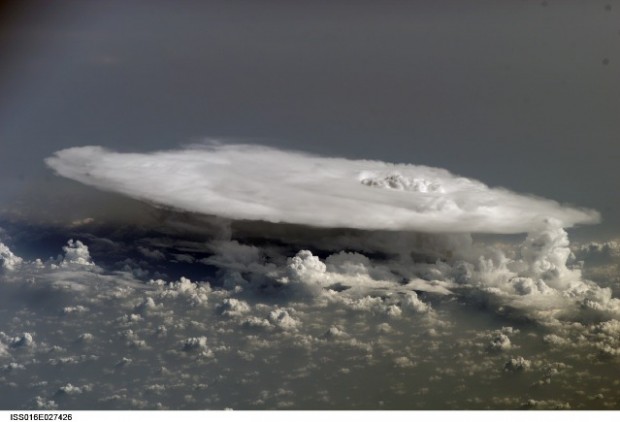
Thunderstorms are some of the greatest generators of energy on the planet. Scientists have found that they’re powerful enough to produce bursts of gamma rays that produce antimatter in Earth’s upper atmosphere. These terrestrial gamm-ray bursts happen hundreds of times daily across the globe as thunderstorms spawn mind-boggling gouts of energy.
It’s a striking discovery, because one of the strange characteristics of our universe is a seeming imbalance between matter and antimatter. But using NASA’s Fermi Gamma-ray Telescope, scientists at the University of Alabama at Huntsville have captured antimatter originating from bursts of electrons emitted from the powerful electrical fields procuded by thunderstorms. Those electrons accelerate as they rocket upward encountering less matter to slow them down in the ever-less-dense upper atmosphere. Nearing the speed of light, they carry enough of a wallop to carve off a gamma ray when they finally strike an atom. When the gamma strikes another atom in turn, it splits into an electron and a positron the electron’s antimatter counterpart.
So does it turn out that you tend to find antimatter wherever you point something capable of detecting it? With a hammer, you find nails everywhere; with an antimatter detector, the same logic follows. But perhaps it also serves to remind us that we’re part of the big show that is the cosmos that Earth’s environment has more in common with events and energies once associated with far-flung regions like the centers of galaxies than daily life on the planet’s surface leads us to believe.
 Gearfuse Technology, Science, Culture & More
Gearfuse Technology, Science, Culture & More


